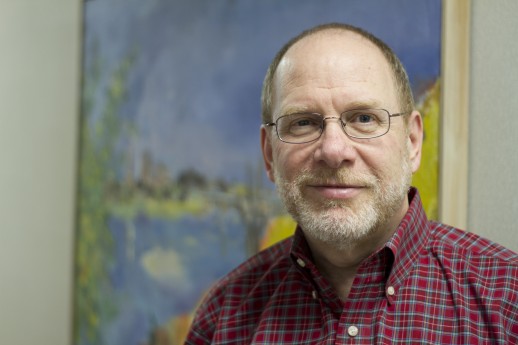Building capacity for TransformUS
With membership on the TransformUS task forces set, program prioritization expert Larry Goldstein was recently on campus talking with those involved to ensure the process got off to a good start.
By Kris Foster "The way I've designed my consulting practice is to try to build institutional capacity with every engagement that I undertake," explained Goldstein, who worked with both task forces to establish operating principles, decision making protocols, draft criteria and weightings to be used during the academic and service program prioritization process.
"The way I've designed my consulting practice is to try to build institutional capacity with every engagement that I undertake," explained Goldstein, who worked with both task forces to establish operating principles, decision making protocols, draft criteria and weightings to be used during the academic and service program prioritization process."The whole idea here is that we want to start this well. We do all of the work that I'm directly involved in on campus over these few days and in all likelihood you won't see me again. I will have extensive telephone and email contact, but by and large they (the task forces) do the work by themselves now."
Goldstein is clear that his involvement has nothing to do with determining outcomes. "I want this to be the University of Saskatchewan process not the Larry Goldstein process, not the Bob Dickeson process," he explained, referring to he author of Prioritizing Academic Programs and Services on which TransformUS is based. "TransformUS is designed specifically by the people who are undertaking it to work for the university."
Goldstein, who during his 35-year career in higher education has worked with more than 700 post-secondary intuitions on various challenges, said program prioritization is a necessary step for a few significant reasons.
"I wouldn't call it a trend, but one of the major factors influencing this is that the vast majority of institutions are very good at adding programs to respond to new interests and not so good at eliminating things that have outlived their usefulness."
When that factor is combined with a few other current realities, the need for program prioritization becomes quite clear, he said.
"Consider the implications of the world economy and how that translates into reduced government funding. Then add to that the fact that higher education no longer enjoys the position of respect, in some sectors, that it used to and you have people questioning the value of higher education even though all the data support how important higher education is for lifetime success. People are questioning the cost against what you get for it."
When post-secondary institutions are faced with all of those factors, they have to do two things, he said. "One, they need to focus better and two, they need to have some mechanism for ensuring that the investments they are making are in the most appropriate activities. And prioritization is a process for achieving that."
There are two main motives for undertaking a prioritization process, he explained. "One is to respond to an anticipated budget shortfall and the second is to make the university the best it can be in light of its current resource realities. That's the motivation. This is not being undertaken for the objective of cutting things away from the university."
To be successful, Goldstein continued, the process must be transparent and treat every program fairly, "and I'm seeing that in textbook fashion here at the U of S."
To that end, each taskforce has developed criteria and weighting systems that are designed to work equally well for all programs and functions on campus. He added the template that will be used for evaluation was also designed to give every program and function on campus the chance to demonstrate what it is contributing to the university and how it is helping the university be successful.
"My belief is this (prioritization) should be the first stage of any strategic planning process. The rationale for that is that very few institutions know how to finance a plan that they develop. They have wonderful ideas but no resources. This is assessment, planning and resource allocation all rolled into one. If you do this first, you identify the resources that will be freed up to be reallocated within the institution and you will have identified those things that have outlived their usefulness."

